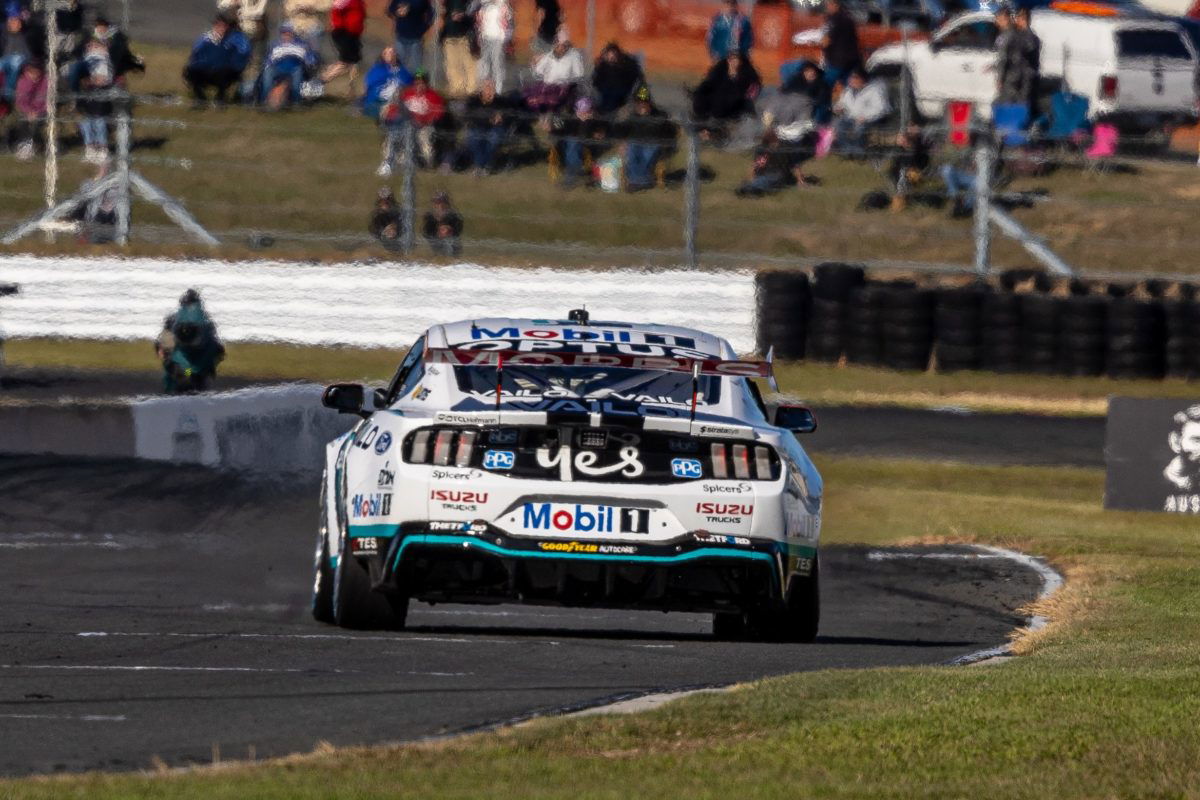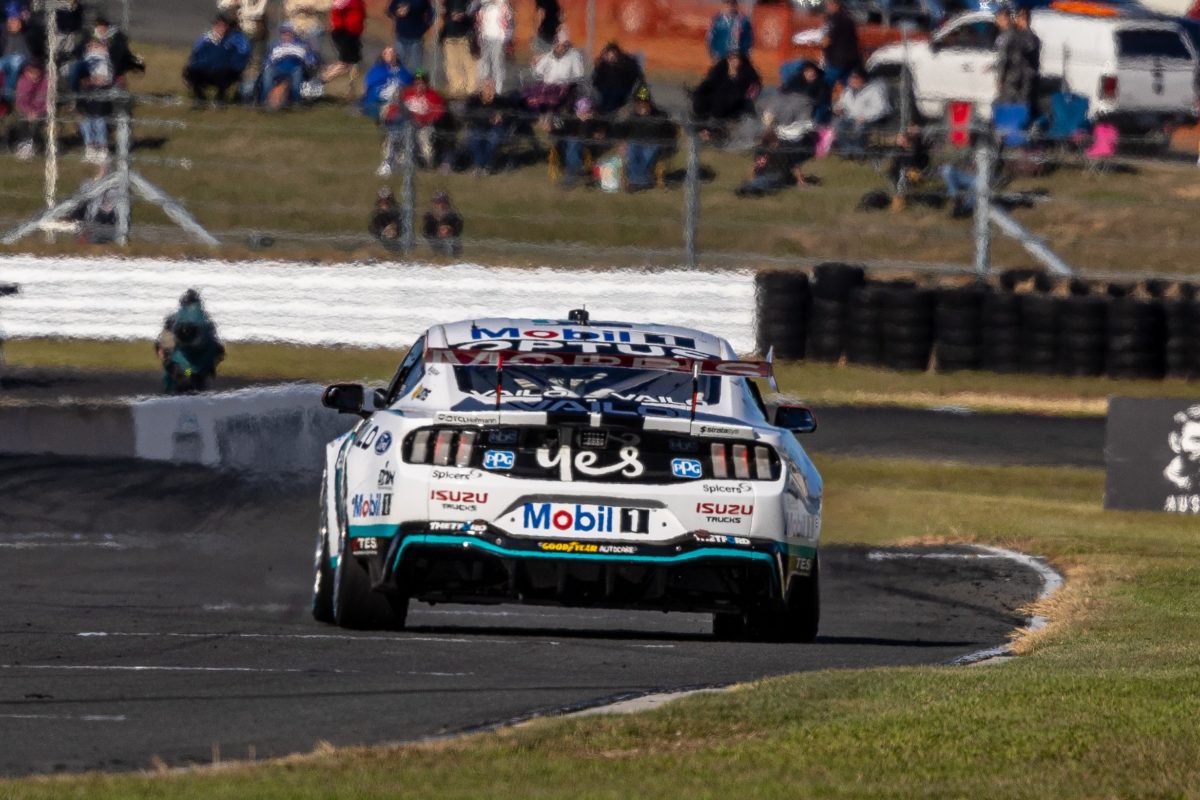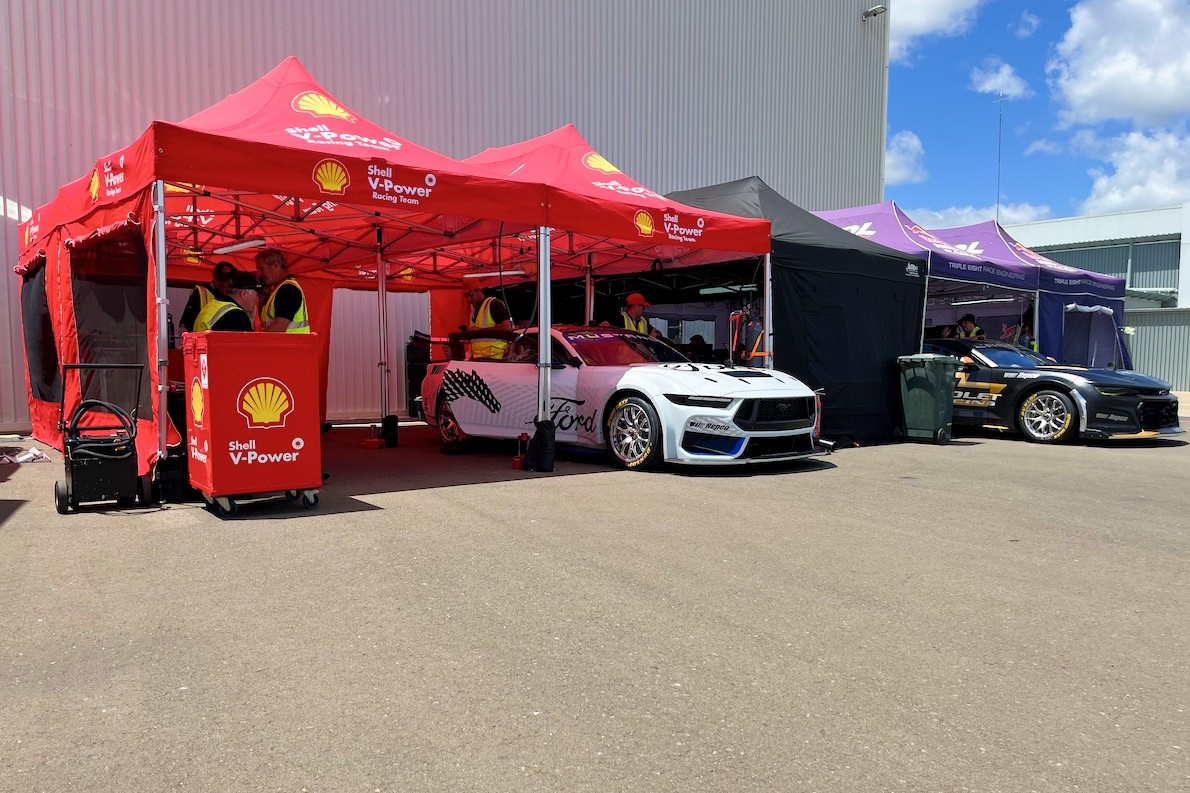

The picture is becoming clearer as to what changes will be made as a result of Supercars’ ongoing parity review.
The review was announced just over a week ago after the Chevrolet teams continued their dominance of the first season of Gen3 with three wins from three and eight podium finishes from nine at the Betr Darwin Triple Crown.
While mystery surrounds the finer details of the so-called ‘parity trigger’ and whether it is in fact a formal part of the Teams Racing Charter – indeed, the Supercars Operations Manual allows the Supercars Board to undertake a parity review “at their discretion” (Rule A1.4.6) – the championship and its homologation teams swung into action with a lengthy engineering meeting on Monday.
Since then, it has emerged that Declan Fraser’s Tickford Racing Mustang, with Cameron Waters behind the wheel, was used for parity testing at Winton on Tuesday, and Ford homologation team Dick Johnson Racing is set to undertake the same activity today at Queensland Raceway.
Modifications to the Ford Mustang package will therefore not be decided upon until late this afternoon at the very earliest, although it is not unlikely that there will be further analysis tomorrow.
However, it can be anticipated what changes will ultimately be made in a broad sense.
Firstly, engine changes are highly unlikely, particularly with respect to hardware, notwithstanding that Supercars engine expert Craig Hasted was spotted carrying throttle bodies in the Winton pit lane on Tuesday.
Furthermore, the Ford calibration is expected to remain the same as it was at Hidden Valley, having been well-received by Mustang drivers, although an installed shift cut discrepancy between the two models is also set to stay in place.
Any more changes on the engine front would be seemingly set to come, if at all, after torque sensors are fitted to the cars and/or the powerplants are put onto a transient dynamometer.
On the other hand, tweaks to aerodynamics are now highly likely.
A ‘mini VCAT’ at Temora instead delivered the Camaro slightly more front downforce, but the Mustang has proven to be uncompetitive in racing (as opposed to qualifying) particularly.
While the two vehicles must have the same total downforce and similar balance thanks to Supercars’ VCAT process, that programme exclusively entails straight-line running.
The problem, it has been put to Speedcafe, arises in cornering.
One theory is that the behaviour of the Mustang under brakes – when it pitches; that is, the nose of the car lowers and the tail rises – means it is less stable than the Camaro.
In practice, that would manifest itself in slower cornering and more reliance on mechanical grip to exit the turn – and hence premature rear tyre wear, slower exits as tyres wear (due to less mechanical grip), or some combination of both of those effects.
The fix is tricky, given it will rely on some combination of CFD (computational fluid dynamics) work and race track validation, hence the activity at Winton and Queensland Raceway.
Supercars’ longstanding partner, D2H Advanced Technologies, has been running the CFD work in the United Kingdom, but the running by Waters and one of DJR’s drivers (presumably Car #17 primary driver Will Davison given Anton De Pasquale is racing in the 24 Hours of Spa this weekend) will be important in determining how much any new aero package would help stabilise the rear end of the Mustang.
Fortunately, the bodywork options are apparently pieces from the existing VCAT ‘toolbox’ and are therefore something of a known quantity.

Additionally, any changes which will be made are likely to be contained to the rear end of the car.
The trick will be coming up with an overall package which maintains the existing downforce levels at high-speed, straight-line running – which should be a relatively straightforward exercise thanks to VCAT – while achieving more rear downforce in cornering and not adding drag.
The irony in this parity furore is that the margins up and down the field have been incredibly tight, to the tune of less than seven tenths of a second from front to back in qualifying at Hidden Valley, where the lap is (slightly) longer than a minute.
However, when the cars are so closely matched, even a very small disparity could manifest in a significant way in the race.
Therefore, any changes to the rear end of the Mustang are likely to be minor, to the point where they may well be imperceptible to at least the untrained eye.
The precise details of those changes remain to be seen, but there is said to be positive collaboration between the key stakeholders in the process.
While the clock is ticking ahead of next weekend’s NTI Townsville 500, production of whatever new bodywork is required for the Mustangs in time for that event will not be an issue.
Ford teams are likely to be making changes to their cars upon arrival at the Reid Park Street Circuit, although that was a task which the Holden teams underwent at Pukekohe in 2019.
For the record, Technical Parity is covered by Rule A1.4 of the Supercars Operations manual.
In particular, Rule A1.4.5 outlines the six technical parity parameters:
To the extent that it is possible, Supercars will use its best endeavours to ensure a level playing field for all competing makes and models of Car, specifically in the following performance areas:
1.4.5.1 Total Aerodynamic Downforce
1.4.5.2 Aerodynamic Downforce Balance
1.4.5.3 Aerodynamic Drag
1.4.5.4 Centre of Gravity
1.4.5.5 Engine Power
1.4.5.6 Fuel Consumption
Practice starts in Townsville next Friday.




















Discussion about this post